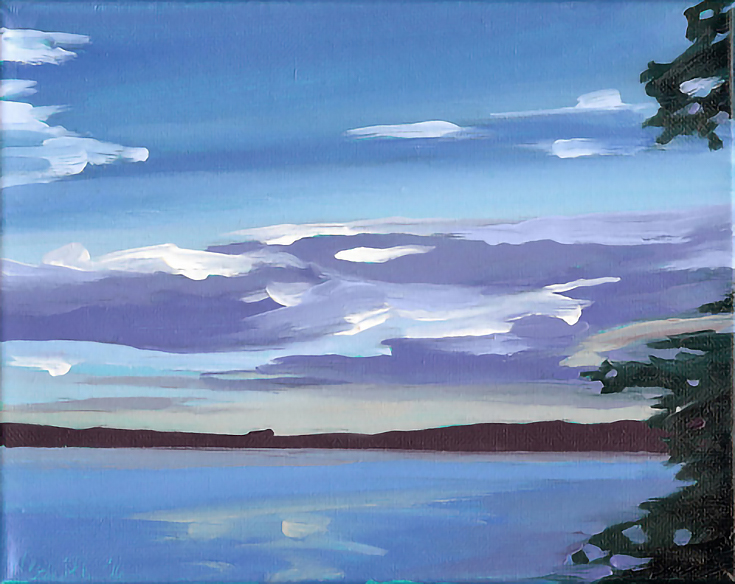We humans perceive color in very subjective terms. . . perhaps because more than any other element of art, color has the ability to set the entire tone of a painting, as well as elicit a change of mood in the viewer.
There are lots of color schemes that artists can use in their paintings: complimentary, triadic, split-complimentary, monochromatic, and of course, analogous.
Some painters choose to utilize color theory in an exacting manner, while other artists swing the pendulum to the extreme opposite and use their intuition alone, a sort of fly-by-the-seat-of-your-pants approach.
Personally, I think that often the best results lie somewhere in between.
For example, when I started on the painting shown below, I was thinking about the calm evenings my family and I shared this past summer at Lake Mineral Wells, when the heat of the day would dissipate and a cool breeze would roll across the water.
I wanted to capture the contented feeling I had after a long day of hiking with the kids when we’d sit by the shore and watch the water and the sky.
Many of my paintings feature warm yellows, oranges, and reds of the early morning or late evening sky, but I decided another color palette would better serve the mood I was after in this painting, and I loosely planned out what some would call an “analogous color scheme” based around some cooler colors.
If you’re not familiar with it, an analogous color scheme is one that uses colors which are side-by-side on the color wheel.
I like to think of analogous colors as cousins. . . they’re close to each other and have some blood in common, but they’re in different families. And like cousins (our life-long playmates) analogous colors always have a kind of built-in harmony. They just get along nicely in a painting, and create an easy harmony without much effort.
Now, although this painting is based on blues and greens, during the course of the painting I felt that a few accents of slightly warmer colors would increase the sense of space and atmosphere.
I added slight amount of orange to some of the lighter green areas, and some of the darker blues are pushed towards a violet. The distant shore became a deep, dull red. These additions were intuitive, but adding them suddenly brought the blues and greens to life.
For me, color theories are informative, and although I’ve explored color theory in a quasi-scientific manner when I was younger I think it’s just as important to trust our eyes and our intuition.
After all, as artists we’re not after a perfect color formula. . . what we’re after is that extra little something that has the power to touch another human being.
For more articles by Mark Nesmith, please visit paintdailytexas.blogspot.com
This post may contain affiliate links.

